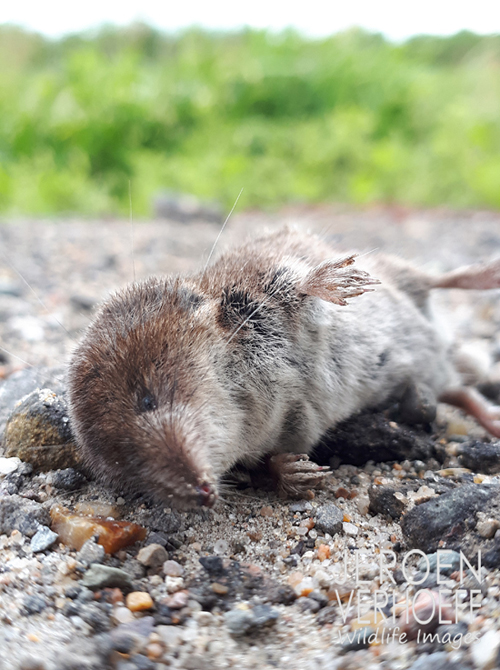
- .
Almost every year I find a dead wood shrew or house shrew. Usually they are undamaged and often they lay exposed in the middle of a bicycle or walking path. What’s up with that?
Shrews are not mice at all. Mice are rodents and shrews are insectivores, just like hedgehogs and moles. But they don’t just eat insects, they actually eat any animal they can get their hands on, sometimes even mice and frogs bigger than themselves. Shrews are unbelievably tough supercritters. They are lightning fast and always hungry. Their metabolism is so fast that they have to eat every few hours or they will die instantly. Their brains and some organs shrink in winter to conserve energy, but it still remains a mystery to me how they survive the winter. Their bite is venomous and most predators except owls do not eat them because they are so unappetising. When the young are a bit bigger, one gently bites the base of mom’s tail and the rest does the same with a brother or sister. Such a ‘shrewtrain’ then scours the environment for prey. The Etruscian shrew from Southern Europe is so small that it can run through the tunnels of large earthworms! Water shrews even catch fish! What great creatures they are! Shrews are everywhere, but they are rarely seen. I have been able to film house shrews regularly in recent years; great to see those mini tigers scurrying under the foliage!
It is likely that birds of prey, weasels and foxes sometimes accidentally catch a shrew, which they then leave behind, because shrews do not taste very nice. That is why you regularly find intact dead shrews on your path.